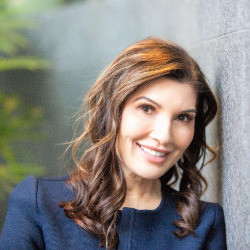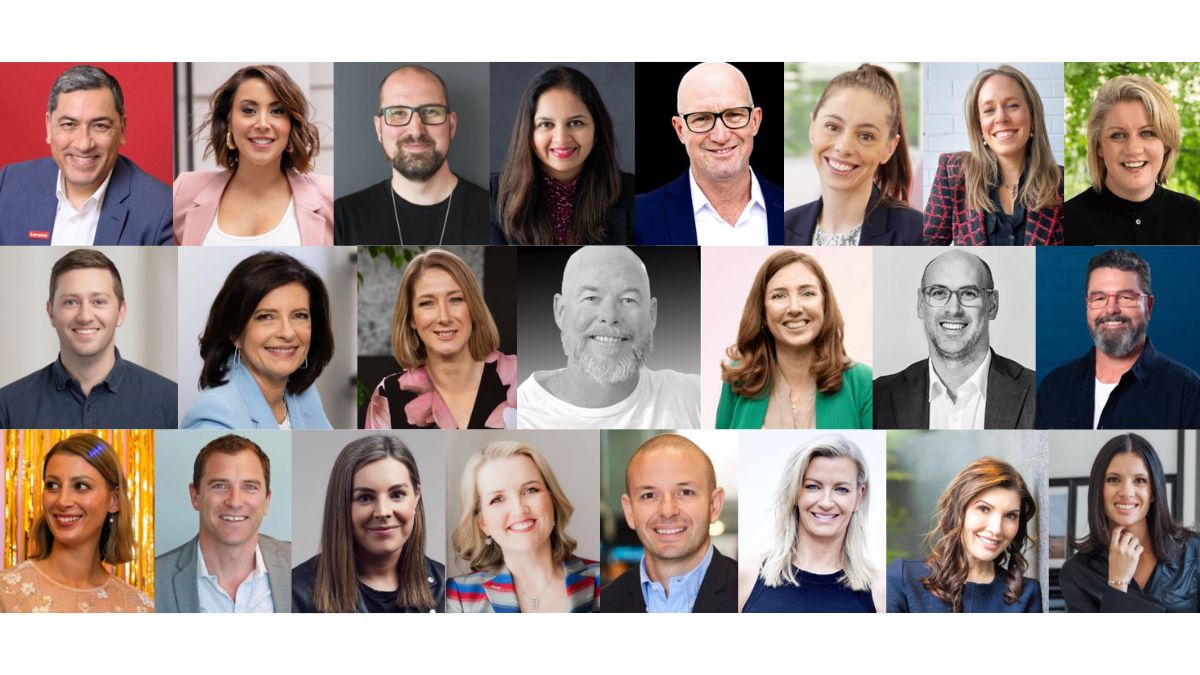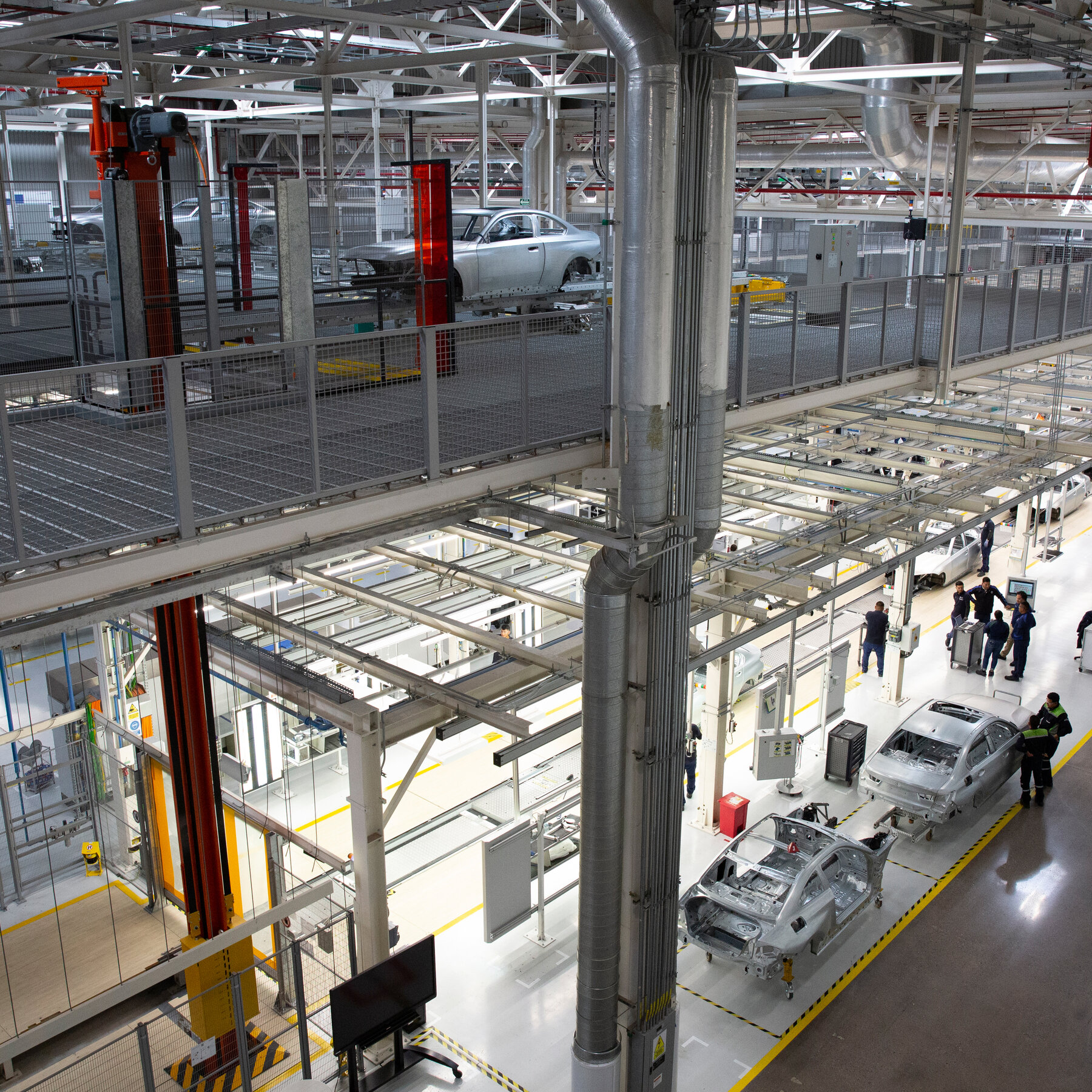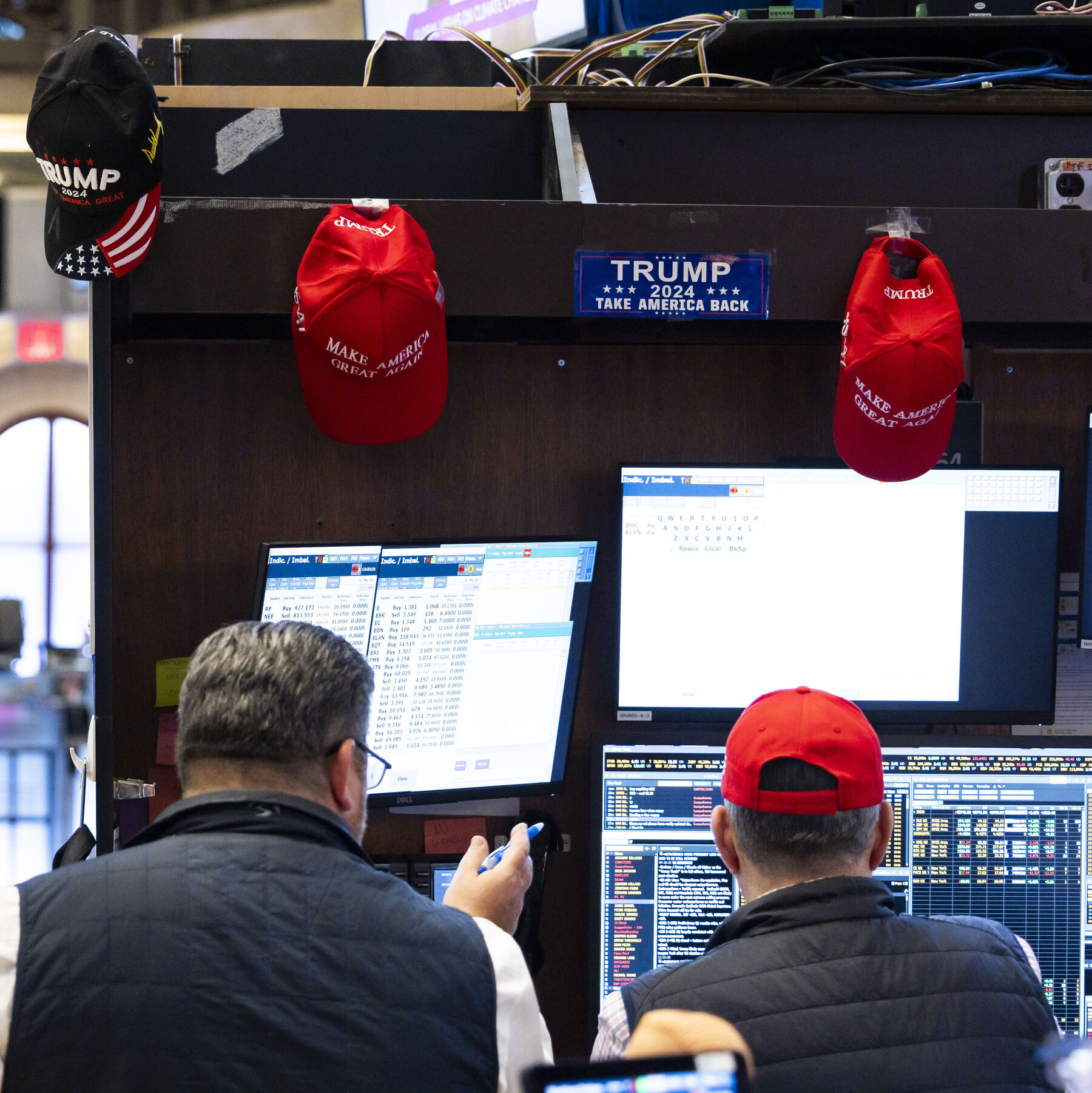In a world where innovation is the driving force behind success, creativity has become the ultimate competitive edge. But fostering creativity within your organization doesn’t happen overnight—it takes a conscious effort to build a culture where new ideas aren’t just welcomed, but actively encouraged.
Whether it’s solving tough problems or staying ahead of industry trends, creating an environment that sparks creativity is the secret sauce to staying relevant and thriving.
In today’s edition of Let’s talk, our experts dive into some actionable strategies that will unlock your team’s creative potential and turn those fresh ideas into game-changing results.
Let’s Talk
Contribute to Dynamic Business ✍
Dr Kristina Dorniak-Wall, Lead People Scientist at Culture Amp

“Building a culture of high performance can help unlock creativity within your organisation.
“Our most recently released data, collected from employees across more than 1,500 global companies, found that only 43% of underperforming employees agreed that it was safe to take risks and innovate, but employees with higher levels of performance were 17 to 23% more likely to agree they could take risks.
“Feeling safe to innovate and take risks is a key factor for unlocking creativity within your organisation, so how can you build a high performance culture where people are more likely to take risks and create new opportunities?
“While it’s natural for performance to fluctuate over time, getting the organisational framework for performance right means your people are more likely to benefit from having people on your team who feel confident to raise their hand with new ideas, and psychologically safe to contribute.
“This includes offering every employee consistent managerial support, fair performance evaluation, recognition, and the freedom to experiment and learn from failure, to nurture growth and build future performance.
“Start by measuring performance, so that you have a baseline from which to develop performance and to empower your people to innovate and contribute creatively.”
David Oakley, Vice President, Asia Pacific at Miro

“Creativity is essential for innovation but it can be difficult to nurture without the right framework in place. It requires tools that offer flexibility and space for collaborative imagination; tools that remove silos and encourage experimentation without restraint, where teams feel free to branch off and see where ideas take them, without the need to erase or overwrite previous thoughts. Having the freedom to let ideas flow and develop encourages more open-ended, outside-the-box thinking.
“Recognising diverse thinking styles and ways of working is also vital. Understanding that everyone thinks and learns differently, and ensuring your organisation’s tools cater to those differences, will mean everyone can contribute their best ideas—whether they prefer to use structured diagrams, jot down notes, or sketch out concepts to arrive there.
“Perhaps most importantly, tools must encourage collaboration. Often the best ideas emerge when team members can build off one another, so ensuring that everyone can brainstorm together — whether they’re at home, in the office, or even in a different time zone — will enable more spontaneous, efficient, and well-rounded brainstorming sessions.
“Leaders who recognise the value of creativity and actively work to foster it within their organisations are likely to unlock greater breakthroughs and innovation in the long run.”
Alex Neilson, Senior International Marketing Manager at Squarespace

“Creativity has been an integral part of Squarespace’s DNA since its inception over two decades ago. From product design, to brand campaigns, it is infused across the entire company. I would encourage organisations to stop thinking about creativity as solely confined to traditional positions, such as illustrators or designers. Everyone can bring creativity to their role. Look to build teams who are able to find inspiration from every corner of their world and bring diverse perspectives to their work. By fostering a culture of creativity and innovation, where diverse perspectives are valued and encouraged, businesses can unlock new opportunities and drive growth.”
Michelle Gibbings, Workplace Expert and Award-Winning Author

“Building your leadership competency starts with challenging your definition of what it means to be creative. We can all be creative, just in different ways and to various degrees. To develop a creative mindset, look for opportunities in your working day to think differently and adopt new approaches. For example, consider approaching problems with an open mind, taking risks, learning from mistakes, and using failure as a stepping stone to progress. It might involve reshaping, adding or subtracting from an existing idea. Creativity isn’t just about starting from scratch. Sometimes, a tiny creative tweak or alteration can turn an average idea into an awesome one. As well, give your brain time to wonder and ponder. Mind wandering benefits your creativity, problem-solving abilities, and well-being because it can act as a natural stress-release mechanism. Many of your best ideas arise when your brain is relaxed.”
Anthony Capano, Regional Director of ANZ, Intuit Mailchimp

“Creating a truly creative environment means building a culture where fresh ideas are welcomed, collaboration thrives, and experimentation feels safe. At the heart of impactful marketing is that freedom to try new things, but sometimes repetitive tasks can drain the energy that fuels innovation. That’s where AI can step in as a valuable partner.
“By automating routine work, AI frees up time for the team to dive into what truly inspires them—whether that’s crafting campaigns that resonate, analysing customer insights for new trends, or refining content to make the brand’s voice shine. When we embrace AI as a tool to enhance creativity, not replace it, we unlock incredible potential.
“Finding the right balance is key. By supporting risk-taking and encouraging experimentation, we build an environment where creativity and growth go hand in hand, empowering our team to connect with audiences in new and authentic ways.”
Terri Martin, Head of NIDA Corporate Training

- “Celebrate initiative, not perfection
Creativity is never perfect – it requires us to be vulnerable. Your team won’t always get it right: you can’t ask people to be creative and then judge them for doing so. Be openly ok with mistakes and failures. - Do creative activities OOO
Do a painting class, do karaoke, set a photography challenge – get your team in a creative mindset by doing things together that foster creativity in a safe space. - Bring them on the journey
Creativity means different things to different people, and some will not identify as being creative. Ask your team what creativity means to them, or what creativity they appreciate. This can tell you the best type of creativity to focus on in your business. - Lead by example
Demonstrate that you’re not afraid to be creative. - Thread creativity into different parts of your business
On each project, ask your team what is one thing we could do to make this more creative? If you ask that regularly you’ll start to build that expectation into their minds and they’ll start to think creatively themselves. - “Communicate the why
It’s important to bring your team on WHY you want them to be more creative. Clear communication is imperative. Your team must understand why being creative is important to the business and what you hope to achieve by cultivating it.”
Lisl Pietersz, Solopreneur, Communications and Transition Coach, University of Sydney Business School, AGSM at University of NSW

“Creativity is to innovation what butter is to Vegemite on toast; they are inseparable. While fostering creativity might seem intangible to small business owners, the good news is that you don’t need a big budget, lots of time, or fancy offices for creativity to flourish. My top hacks to foster organisational creativity are:
- Leverage AI: Use your preferred GenAI platform and AI-powered apps to spark ideas across business functions, from customer engagement strategies to workflow automation and data analysis.
- Make it fun: Creativity loves collaboration. Organise employee activations, like snap brainstorming sessions or ideas sprints. These could include, for example, ideating a customer problem. In a 20-minute sprint, teams can prompt their GenAI platform, develop the outputs, share their solutions, and vote on the best ideas.
- Integrate daily creativity hacks: Reinforce that creativity is part of everyday tasks, like finding ways to improve processes or enhance customer interactions. Encourage team members to share small improvements during team meetings or Town Halls. Don’t forget that diverse perspectives lead to richer ideas.
- Nurturing creativity builds the foundation for innovation. When creative thinking is a routine part of work, people feel empowered to contribute, which creates an organisational culture that business owners dream about.”
Pamela Jabbour, CEO & Founder, Total Image Group

“To foster creativity in any organisation, I believe it starts with building a culture where people feel comfortable sharing ideas and trying new things. Encouraging open discussions and bringing together different perspectives leads to some of the best ideas—it’s amazing what can come out of a team when everyone feels valued and included.
“Innovation in product development also plays a huge role. At Total Image Group, whether it’s exploring new materials, refining designs, or tackling problems in unique ways, gives teams the space to push boundaries keeping things fresh and exciting. When you align this creative energy with a bigger purpose—like sustainability or social impact—it adds real meaning to the work, and challenges people to think beyond the usual.
“Most importantly, fostering creativity is about giving people room to experiment and take risks without the fear of getting it wrong. When teams know it’s okay to fail, they’re more willing to try something new, which is how true innovation happens. It’s about building a culture that’s curious, open, and unafraid to push the limits.”
Sumir Bhatia, President, Asia Pacific at Lenovo ISG

“At Lenovo, we believe creativity starts with people. True innovation is only possible when every voice has a chance to contribute, which is why we approach everything with a ‘Smarter Together’ mindset. This spirit of collaboration is what drives us to create real, impactful solutions for the challenges our customers face every day.
“To bring out the best ideas, we keep three core principles in mind:
- Simplicity: The best ideas are often the simplest. Complexity can cloud creativity, so we focus on clear, straightforward solutions that make life easier and help our teams work more effectively.
- “Relevance: Today’s customers expect more than just products—they seek authenticity and purpose. In Australia, for example, 68% of consumers say they’ll walk away from brands they don’t trust. It’s a reminder that meaningful creativity is about understanding people’s needs and making a difference in their lives, not just promoting features.
- Courage to Break the Rules: Sometimes, making an impact means doing things differently. Fresh ideas come from daring to step outside the norm, so we encourage our teams to challenge conventions and find new ways to stand out.
“At Lenovo, our commitment is simple: to bring purposeful, creative solutions that genuinely improve our customers’ experiences. We’re here to make things smarter—and together, there’s no limit to what we can achieve.”
Louise Gilbert, Change and Leadership Coach, Author of Make Work Work For You

“Fostering creativity means creating conditions for ideas to flow naturally, driving performance and growth. Start by building in ‘white space,’ giving people freedom to explore perspectives and recharge—supporting wellbeing and laying a foundation for sustainable performance.
“Encourage everyone to ‘lift up and look out,’ stepping beyond day-to-day routines to gather insights from the world around them, expanding their capacity for growth and problem-solving.
“Finally, ‘inject innovation’ by applying these insights to real challenges. Using metaphors can unlock fresh thinking, pushing your team to go beyond convention and cultivate a culture where creativity thrives. Creativity must be embedded in daily work, not treated as an add-on.
“Challenge your team to see familiar problems in new ways, to bank observations for future insights, and to value every perspective. When creativity is nurtured this way, it drives sustainable growth across the organisation. This balanced approach to performance, growth, and wellbeing creates creativity and excellence.”
Nicholas Simonsen, Head of Content at Impressive

“It all comes down to positivity. Positivity is such a powerful catalyst for creativity and it’s something that drives our team at Impressive daily.
“When team members feel supported, encouraged and confident, they’re more likely to take risks, share ideas and collaborate openly—all of which are key drivers of innovation.
“Positivity nurtures a growth mindset, enabling individuals to approach challenges as opportunities for creative solutions. We believe this environment fosters resilience and adaptability, helping our team to think beyond conventional strategies and find unique ways to connect with audiences.
“At Impressive, one of our key mantras is ‘Love your work’ and we want our team to do exactly that. Providing a positive environment is an essential ingredient that transforms everyday work into groundbreaking campaigns and extraordinary client success.”
Pranjali Karve, Cyber Security Engineer, Interactive

“Creativity is Intelligence having fun”- Albert Einstein
“Creativity can elevate a business from routine to extraordinary. It can be nurtured in individuals and harnessed collectively to solve problems and generate innovative ideas.
“To encourage creative thinking, use simple techniques consistently. For example, gather a diverse group of 5-10 people from different departments. Present them with a provocative statement for a problem. Ask for raw, unformed ideas. Encourage wild ideas, then develop the most promising ones. This will shift thinking from vertical to lateral, fostering creativity and providing out-of-the-box solutions.
“Example:
Problem: An IT service provider is facing challenges with slow response times and resolution rates, leading to customer dissatisfaction and potential loss of clients.
Provocative Statement: “What if we could resolve every customer issue within an hour, no matter how complex?”
“Provocative statements encourage people to think outside the box by challenging their vertical thinking patterns. Practicing this within an organization regularly fosters creativity.
“Creative problem-solving techniques and their benefits are grounded in sound research and widely published. Research by Edward De Bono for creative problem solving, and Cunningham’s law for power of provocation are highly recommended reads.”
Anton Guinea, Director at The Guinea Group

“Fostering creativity starts by building a psychologically safe environment. For example, Google’s Project Aristotle found that psychological safety was the number one predictor of high-performing teams.
“When team members feel safe to take risks and share ideas without fear of judgment, they’re more likely to think outside the box, experiment, and challenge the status quo.
“Leaders play a crucial role in creating this safe space. It’s about actively listening, encouraging diverse perspectives, and creating a culture of open communication. When leaders understand the neurobiological underpinnings of behaviour, they can recognise and manage their own stress responses, and in turn, create a calmer and more supportive environment for their teams. This leads to individuals who feel heard and valued, and they’re more likely to contribute their unique ideas and insights.
“Creativity thrives in an atmosphere of trust and respect. So, focus on building strong relationships, promoting collaboration, and celebrating both successes and failures as learning opportunities. By fostering a psychologically safe environment, you can unlock the creative potential and drive innovation in any organisation.”
Bryden Campbell, Managing Director at Brand Rebellion

“Providing the right environment where people can feel comfortable is key to engineering productive creativity at your organisation. If it is a safe and supportive space where people share ideas, you’ll find that people are more open to contributing creatively.
“Clear goals and useful insights and data help build creativity. Sometimes people think “the sky is the limit” but, actually, you’ll find a lack of parameters more of a hindrance than a help. Sharing relevant data and insights – and even setting boundaries – can enhance problem-solving by giving people the structure they need to think outside the box.
“See failures as learning opportunities, but also make sure your team is resourced and supported appropriately. Invest in people’s growth: they’ll keep bringing fresh perspectives.
“Building a creative culture is about blending freedom with flexibility and providing structure and support.
“Lead by example – if you have a willingness to put your ideas out there, it sets the tone for the organisation.
“Diversity also leads to a creative culture – different perspectives provide different insights.”
Zoe Goodhardt, Head of Growth and Marketing and Partner at TAG

“Fostering creativity within an organisation starts with building a culture where everyone feels empowered to voice their ideas. At TAG, we encourage our team to dream big, even if the ideas seem outlandish at first. When we brainstorm for a new campaign, we start by thinking expansively, exploring concepts that stretch beyond the typical bounds of what’s feasible. This ‘big ideas first’ approach creates an environment where everyone feels safe suggesting bold ideas without the fear of immediate constraints.
“Once all ideas are on the table, we refine and distil them into a version that’s both innovative and actionable. This process respects everyone’s contributions and keeps creativity at the forefront, while ultimately delivering realistic strategies. By embracing this method, we can foster a workplace culture where creativity thrives and team members feel genuinely invested in their work.”
Kristian Inglis, Head of Human Resources at Employment Compass

“To truly ignite creativity within your organisation, ditch the ping-pong tables and focus on fostering a culture where employees feel empowered to think differently.
“Start by building psychological safety, where everyone feels comfortable sharing ideas without fear of judgment. Encourage open communication and celebrate those who dare to take risks, even if their ideas don’t always hit the mark.
“Next, create an environment that inspires. Think flexible work arrangements and workspaces designed to spark collaboration. Dedicated time for brainstorming sessions, bringing together diverse perspectives from across different departments.
“Don’t forget the importance of continuous learning. Provide access to workshops, training, and guest speakers who can introduce new ways of thinking and problem-solving.
“Remember that engaged employees are more likely to be creative employees. Ensure your team feels valued and supported. Regularly seek their feedback on the work environment and make adjustments to foster a truly innovative culture.”
Cherie Mylordis, Work Futurist and Future-Fit Leadership Expert, nextgenify

“Creativity doesn’t have to mean chaos – instead, think of it as a corporate creativity spectrum. At one end, we have rigid systems that struggle to accept anything new and different. At the other, we have creativity and innovation without any kind of purpose or direction.
“Ideally, you need to aim for somewhere in the happy middle – creativity driven by an organisation’s purpose and vision, supported by a balanced appetite for risk-taking.
“Begin by actively encouraging open, collaborative, and purpose-driven environments. Start by sharing your company’s vision and strategic goals, as well as a list of juicy problems and challenges people can self-select to solve.
“Next, provide dedicated time for members of teams who have self-selected into these creative projects, such as allocating 20% of their time to creatively solve problems and address challenges. This approach gives your people the freedom to work on initiatives that align with the company’s goals, safe in the knowledge that it’s been factored into their schedule.
“Finally, establish a coaching rhythm for the teams and teach them contemporary tools with a ‘working out loud’ philosophy. Set a date for teams to present their solutions to leaders which creates buzz and intensity.”
Leah Mether, Communication Trainer and Speaker

“Creativity doesn’t happen by simply telling people to “be more creative.” Leaders must set the conditions and coach their teams on how to achieve it. Start by asking open-ended questions with direction like, “If you had a magic wand, what would you change to improve team performance?” or “What might a better version of this process look like?” These questions spark creative problem-solving and help your team feel safe to share. Facilitate comfortable idea-sharing, like post-it note exercises where people anonymously submit ideas. This encourages bolder contributions as people discuss the ideas rather than the individuals behind them. To push past obvious ideas, try “Crazy 8s,” a rapid brainstorming exercise where participants sketch eight ideas in four minutes (one every 30 seconds). This activity goes beyond initial thoughts to more innovative solutions. These steps not only spark creativity but foster a culture where ideas are valued and encouraged to grow.”
Jason May, Marketing Chief at Amaze

“Fostering creativity in our organisation means genuinely valuing it as a core element of our culture. Not just in words, but in daily practices. To drive true innovation, we encourage our team to integrate refreshing activities into their workdays, like taking a walk to clear their minds and gain fresh perspectives. Additionally, we’ve carved out dedicated spaces and times specifically for brainstorming sessions, where every idea is welcomed and appreciated. By creating an environment where people feel safe to share, explore, and refine their thoughts, we turn creativity into an organisational asset. In our work with cloud infrastructure and advanced technology solutions, this culture of creativity is vital. It fuels our ability to think beyond conventional limits and design solutions that empower our clients. For us, creativity isn’t an afterthought; it’s woven into everything we do, because we know that’s where breakthrough ideas—and real business value—come from. This commitment helps us stay agile and ensures we’re delivering solutions that meet the fast-changing needs of today’s market.”
Kim Guseli, Founder and Cosmetic Chemist, Botanical Skincare Lab

“As an entrepreneur and cosmetic chemist, fostering creativity is a dynamic, intentional process that is central to my business. I build creativity into my work by setting aside dedicated “lab exploration” time where I can “play” with ingredient combinations and experiment without constraints. This allows me to try new textures and formulations and compositions, leading to breakthroughs that keep my formulations unique and innovative.
“I also make a point to continually seek inspiration from nature, which reminds me of the potential for simple, sustainable solutions in skincare. This inspires ideas for creating products that work in harmony with the planet. Staying curious and open to unconventional approaches, I approach each project with fresh eyes, knowing that creativity thrives on experimentation and a willingness to push beyond the usual boundaries.
“Through a commitment to both curiosity and sustainability, I ensure that every product reflects my values, showing that beauty and environmental care can go hand in hand. This blend of exploration and eco-consciousness keeps creativity alive in my work, driving my business forward in meaningful ways.”
Michael Frier, Senior Account Director, SBM

“There is a misconception that people are either creative or they’re not. Creativity is a muscle that needs to be worked regularly just like any other. Improving creative output should be rewarded the same as any other skill.
“Employees should have objectives and goals on developing their creative skillset. This ensures employees have creativity front of mind, but also reminds managers to reward team members for regularly putting forward creative solutions.
“Having regular brainstorms ensures the whole office’s growth in this area as it gives them an opportunity to watch and learn from each other.
“Introverts can often be misconstrued as not creative because they aren’t always loudly suggesting ideas. However, this is often more about the environment they’re in holding them back than their lack of ideas. Any brainstorm or creative situation should involve breakout rooms or small groups where introverts feel comfortable voicing their opinions.
“Most importantly is the age-old improv phrase, “Yes, and…” This is a creativity rule to live by for any organisation – you don’t shutdown ideas, you say “Yes, and…” and then build on that idea. This helps reinforce a positive approach to creativity.”
Elise Balsillie, Head of Thryv Australia & New Zealand

“Creativity is worth its weight in gold in the workplace; a trend we’re seeing both locally and globally.
“The World Economic Forum reports that over 70 percent of businesses consider ‘creative thinking’ to be the skill most expected to rise in importance over the next five years. Here in Australia, reports project that soft skill-intensive occupations will make up almost two-thirds of the workforce by 2030.
“To accelerate your business with innovative problem-solving and fresh ideas, you first need to create an environment that encourages creativity. Here are my top three techniques.
- Diversify collaboration
Similar minds will approach a problem the same way, but not necessarily the best way. It’s second nature to collaborate with your immediate team members or ask the same people for an opinion or help – but real creative solutions flow freely when you add diversity of thought. Avoid silos and enable creative disruption by encouraging collaboration across your whole business – not just within individual teams or specialities. - Keep things flexible
At Thryv, we’re fortunate to offer our team remote work. While that’s not always an option for small businesses, enabling flexibility (in a way that works for your business) is a great way to keep the creative thoughts whirring. Something as simple as going off-site for a brainstorming session or allowing shift flexibility can break unproductive routines and encourage creative thought. - Operate with high trust
A low-trust team can withhold opinions and shy from challenging the status quo. On the contrary, a high-trust team will feel confident to share opinions, ideas and feedback, without fear of judgment. Always operate with empathy and transparency, and listen with an open mind to build a supportive environment where new ideas are welcome.”
Drew Ridley, Founder, We Are Sprout

“At We Are Sprout, creativity thrives because we make an effort to avoid restrictive rules and rigid structures. Freeing creativity starts with removing barriers and inspiring people to think boldly and beyond the status quo, encouraging them to propose big ideas without fear of being shut down. Creating and maintaining a virtual Inspo board, where team members share and comment, is a good way to keep everyone informed, stimulate fresh ideas and encourage collaboration. Regularly seeking feedback and ideas from everyone in the organisation and (where possible) acting on them, helps to foster a creative culture.
“In this digital world – involving team members in content generation is a fun and impactful way to spark creativity. For example, we engaged team members from various parts of a food production client’s business — farm, processing plant, and food service— in the creation of a YouTube and digital series. For another client, we initiated ‘Team Talk’ on TikTok, inviting their team members to share tips and insights, guided by minimal rules and a fast approval process.
“Ultimately, by encouraging collaboration, valuing all voices, and celebrating creative passions, you foster an environment where creativity can flourish.”
Discover Let’s Talk Business Topics
Keep up to date with our stories on LinkedIn, Twitter, Facebook and Instagram.
In a world where innovation is the driving force behind success, creativity has become the ultimate competitive edge. But fostering creativity within your organization doesn’t happen overnight—it takes a conscious effort to build a culture where new ideas aren’t just welcomed, but actively encouraged. Whether it’s solving tough problems or staying ahead of industry trends, Featured, Let’s Talk, Creativity Dynamic Business









